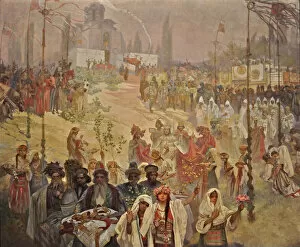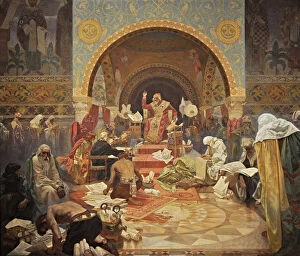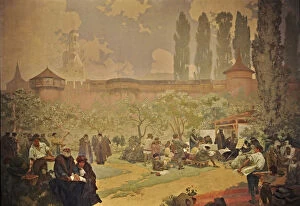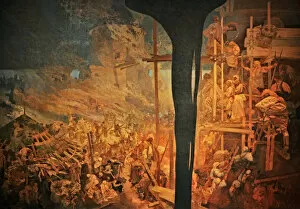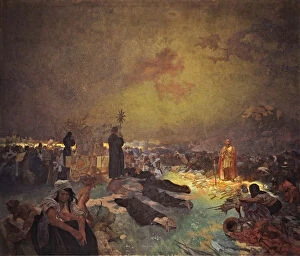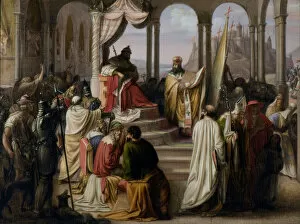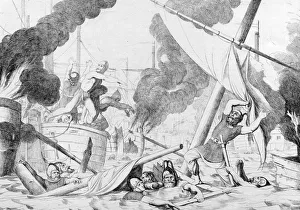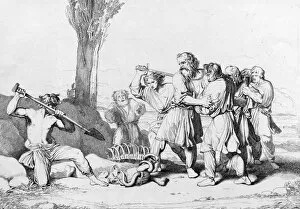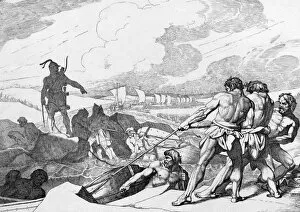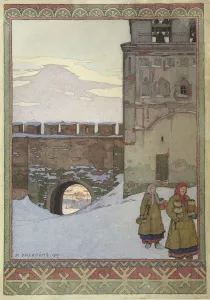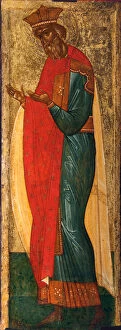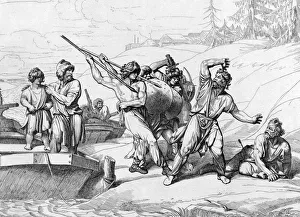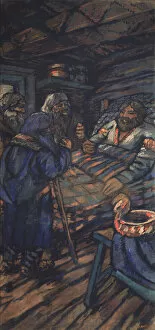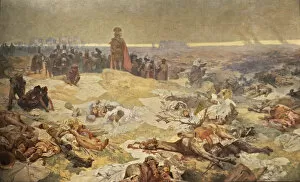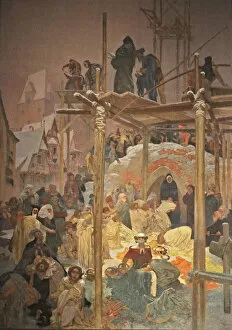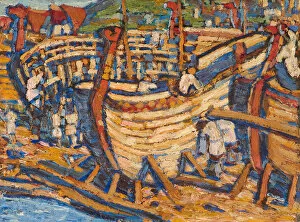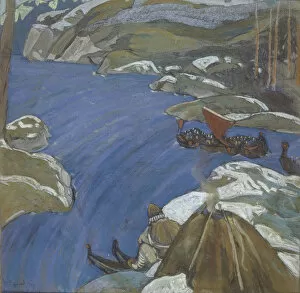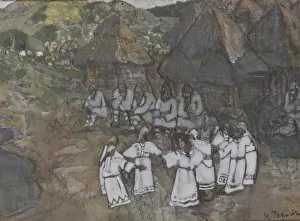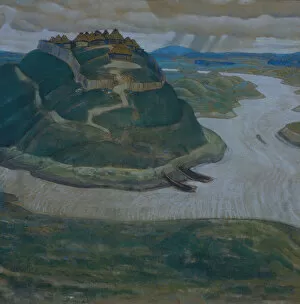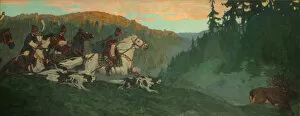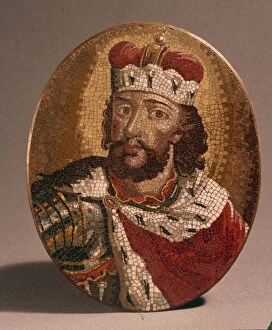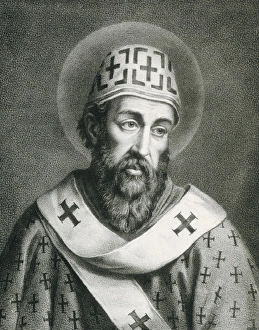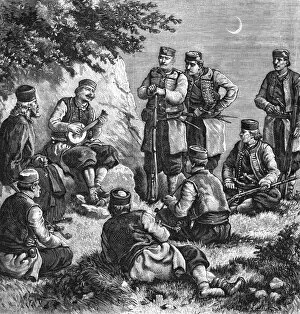Slavs Collection (page 4)
"Exploring the Rich History and Cultural Legacy of the Slavs" The Slavs, a diverse group of people with a fascinating history, have left an indelible mark on the world
All Professionally Made to Order for Quick Shipping
"Exploring the Rich History and Cultural Legacy of the Slavs" The Slavs, a diverse group of people with a fascinating history, have left an indelible mark on the world. From their encounters with Greek fire to their influential leaders and iconic artworks, the Slavic heritage is truly captivating. In ancient times, the Slavs encountered Greek fire, a formidable weapon that ignited fear in their adversaries. This encounter is beautifully depicted in a miniature from the Madrid Skylitzes, showcasing both their resilience and adaptability. One prominent figure in Slavic history is Anne of Kiev, whose statue stands proudly at the Royal Abbey of St. Vincent in Senlis. As Queen consort to King Henry I of France, she played a crucial role in strengthening ties between East and West. Vladimir the Great's campaign to Chersonesos exemplifies his ambition as he expanded his realm through strategic military maneuvers. The artwork depicting this event serves as a testament to his legacy as one of Russia's most influential rulers. Saint Olga, Princess of Kiev, holds great significance within Slavic culture for her conversion to Christianity and subsequent efforts to spread it throughout her kingdom. Artists like Bruni and Nesterov immortalized her grace and devotion through stunning portraits. Alfons Mucha's masterpiece "The Oath of Omladina Under the Slavic Linden Tree" captures unity among young Slavs during turbulent times. It symbolizes their determination to preserve their cultural identity amidst external pressures. Wojciech Gerson's painting "The Lamentable Apostolic Mission" depicts an important moment when missionaries arrived among the Slavs seeking religious conversion—a pivotal event that shaped future generations' beliefs. "The Death of Askold and Dir, " another significant historical episode portrayed by unknown artists highlights power struggles within early Russian states—an enduring theme throughout much of Eastern European history. Prince Alexander Nevsky's plea for mercy from Batu Khan showcases his diplomatic skills and commitment to protecting Russia.



